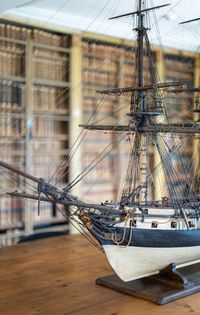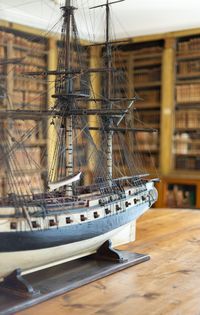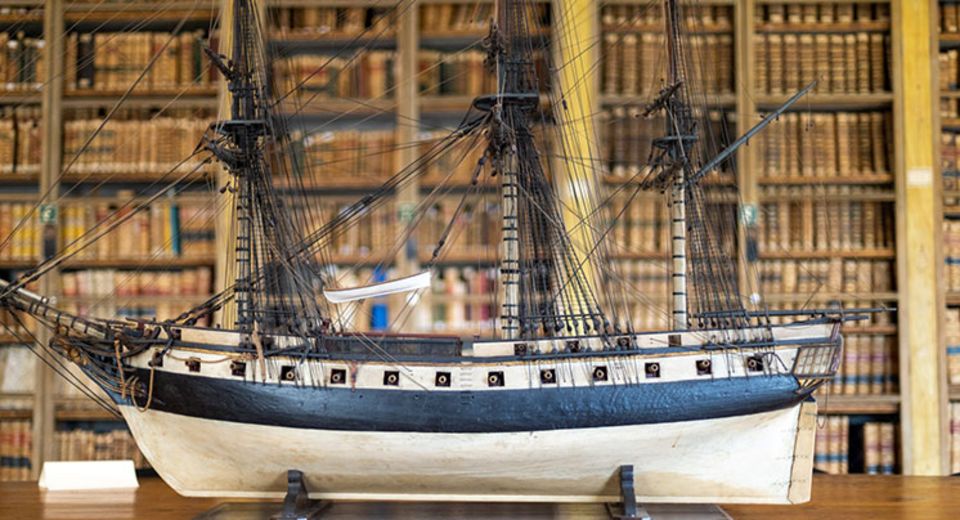The model of the Thétis
Rochefort - Ancienne école de médecine navale
From 1824 to 1826, the frigate Thétis sailed on a voyage of discovery around the world under the command of Ship’s Captain Hyacinthe de Bougainville. Currently on exhibition at the Old School of Naval Medicine, its model is a reminder of the role played by Rochefort-trained medical officers in voyages of scientific exploration.
A career marked by a voyage around the world
 Enlarge image : Thetis_Romain-Osi-_3.jpg
Enlarge image : Thetis_Romain-Osi-_3.jpg
From 1824 to 1826, the frigate Thétis, accompanied by the corvette Espérance, sailed on a voyage of discovery around the world. The expedition was carried out under the command of Ship’s Captain Hyacinthe de Bougainville (1781-1846), son of the famous explorer in charge of France’s first official expedition around the world from 1766 to 1769. The story of the voyage was told in the Journal de la navigation autour du globe de la frégate la Thétis et de la corvette l'Espérance, pendant les années 1824, 1825 et 1826, publié par ordre du Roi (Journal of the frigate Thétis’ and the corvette Espérance’s voyage around the world in the years 1824, 1825 and 1826, published by order of the King) (Paris, 1837).
Rochefort and voyages of scientific exploration
Currently on exhibition at the Old Naval Medical School, its model is a reminder of the role played by Rochefort-trained medical officers in voyages of scientific exploration.
From the 1760s until the mid-19th century, the Navy organised and funded expeditions around the world with a view to describing it in all its diversity. From the early 19th century onwards, the scientists involved also had to be sailors and soldiers. The medical officers trained at the Naval Medical School met this dual requirement. Previously acting as ship’s doctors aboard warships, their training gave them the skills necessary to fulfilling this new role.
An example of standardisation of ships
 Enlarge image : Thetis_Romain-Osi-_4.jpg
Enlarge image : Thetis_Romain-Osi-_4.jpg
The Thétis gave its name to a class of 800-tonne second-rank frigates based on plans drawn up by the engineer and shipbuilder Jacques-Noël Sané in 1781. It was referred to as an “18-pounder” as it was armed with 18-calibre cannons (firing 18-pound balls).
Its weaponry comprised 28 18-pounder cannons, 14 24-pounder carronades and 2 8-pounder carronades. In 1829, its weaponry was increased to 28 18-pounder cannons, 16 24-pounder carronades and 2 18-pounder carronades.
Collection highlight
The essential works to see during your visit to the Musée national de la Marine in Brest, Port-Louis, Rochefort, Toulon, and soon in Paris.

